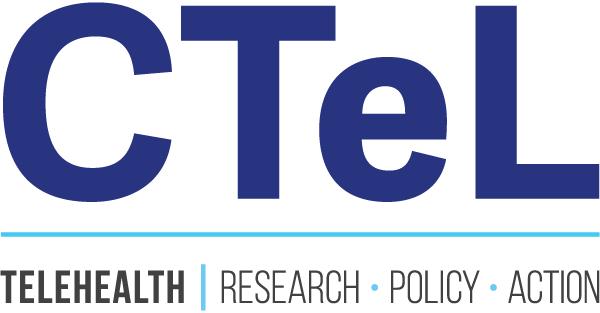Finally, Congress Passes American Relief Act, 2025, Including a 90 Day Telehealth Extension
After a week of intense negotiations and political back-and-forth, Congress has passed the American Relief Act, 2025, narrowly avoiding a government shutdown. This landmark legislation ensures the continuation of essential healthcare programs and includes critical provisions to sustain telehealth access for millions of Americans, albeit for 90 days.
The American Relief Act, 2025, introduces several key provisions to enhance and extend telehealth services, reflecting a commitment to maintaining accessible healthcare options for Medicare beneficiaries. The primary telehealth-related components include:
1. Extension of Certain Telehealth Flexibilities (Section 3207):
Geographic and Originating Site Flexibility: This provision removes the previous geographic limitations, allowing Medicare beneficiaries to receive telehealth services irrespective of their location, including from their homes. This change facilitates broader access to care, particularly benefiting individuals in rural or underserved areas.
Expansion of Eligible Practitioners: The range of healthcare providers authorized to offer telehealth services is broadened, enabling professionals such as physical therapists, occupational therapists, and speech-language pathologists to deliver remote care. This expansion aims to address diverse patient needs through telehealth platforms.
Audio-Only Services: Recognizing the necessity for flexibility in communication methods, especially for patients lacking access to video-capable devices, the act permits the provision of certain telehealth services via audio-only communication. This measure ensures inclusivity in telehealth accessibility.
2. Extending Acute Hospital Care at Home Waiver Authorities (Section 3208):
Hospital-at-Home Programs: The act extends the waiver that allows hospitals to provide acute-level care to patients in their homes. This initiative supports the continuation and expansion of hospital-at-home programs, which have been instrumental in delivering patient-centered care and alleviating hospital capacity constraints.
Telehealth and Hospital Care at Home Waivers: Shortened Extensions Raise Concerns
One of the most critical elements of the new bill is the extension of telehealth and Hospital Care at Home flexibilities, initially introduced during the COVID-19 pandemic. However, the finalized legislation has significantly shortened these extensions to just 90 days, compared to the much longer durations proposed in earlier drafts.
For telehealth, Medicare beneficiaries will continue to enjoy expanded access to services, including audio-only care and reimbursement parity with in-person visits. Yet, the brief extension creates uncertainty for providers and patients, particularly those in underserved areas who rely on these virtual care options.
Similarly, the Hospital Care at Home waiver, originally slated for a five-year extension in prior drafts, has also been reduced to a 90-day timeline, expiring in March 2025. This abrupt change places additional strain on hospitals that utilize the waiver to deliver high-quality acute care in patients' homes, a model shown to improve outcomes and reduce costs.
The truncated extensions have sparked widespread concern among healthcare providers, who are calling for more stable, long-term solutions to preserve access to these essential services and sustain the progress made in patient-centered care during the pandemic. It is important to note that the SUPPORT ACT was not included and was not re-authorized as a part of this package.
Protecting Essential Care Amid Partisan Challenges
The road to passing this legislation was marked by sharp partisan debates. Critics raised concerns about the cost of extending certain provisions, while advocates emphasized the necessity of uninterrupted healthcare services. Bipartisan collaboration ultimately prevailed, ensuring the extension of telehealth flexibilities alongside provisions for Medicaid expansion, children’s healthcare, and public health funding.
“Telehealth has revolutionized how we deliver care, and this bill ensures that these advancements are not lost,” remarked one representative who championed the Act. “It’s a win for patients, providers, and the future of healthcare.”
Collaboration is Key
The negotiations underscore the importance of collaboration across political lines to ensure critical services like telehealth are preserved. The healthcare community must remain vigilant, advocating for telehealth to be a permanent fixture in policy and practice. Providers, health systems, and organizations are encouraged to:
Strengthen partnerships with private insurers to sustain telehealth services.
Educate patients about their telehealth options under the new law.
Invest in hybrid care models to ensure continuity of care regardless of future legislative uncertainties.
A Path Forward for Telehealth: Invest in Research
The American Relief Act, 2025, represents a small step forward in securing telehealth as an essential part of modern healthcare, but we’re not done yet. Providers and organizations are urged to continue lobbying for its permanent adoption while leveraging the opportunities provided by this new legislation.
Investing in telehealth research is vital for ensuring informed and accurate Congressional Budget Office (CBO) scoring to guide the future of telehealth policy. Research supported by CTeL and it’s members provides the robust data needed to evaluate the cost-effectiveness and impact of telehealth services, particularly as Congress considers extensions or permanence of telehealth flexibilities. Without reliable, evidence-based insights, policymakers risk underestimating the long-term benefits of telehealth in reducing healthcare disparities, enhancing patient outcomes, and driving cost savings for the healthcare system.
By funding CTeL’s research initiatives, Congress can ensure that telehealth policies are grounded in data and aligned with national goals for accessible and affordable care. Support for this research is not only an investment in innovation but also a commitment to making equitable healthcare a sustainable reality for all Americans.
As we look to the future and beyond, the passage of this bill reinforces the critical role telehealth plays in enhancing healthcare accessibility, equity, and efficiency for all Americans.





